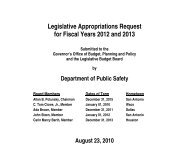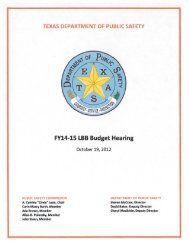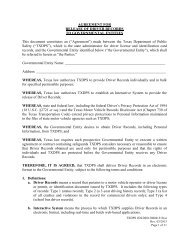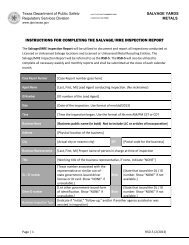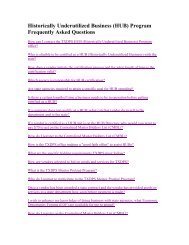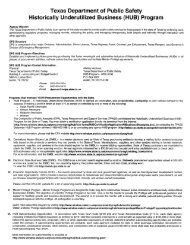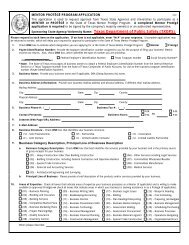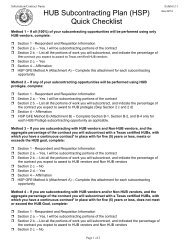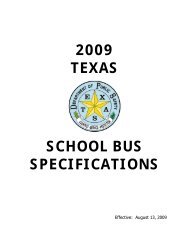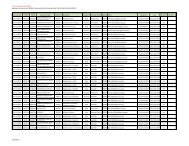Bridge Formula Weights
Bridge Formula Weights
Bridge Formula Weights
You also want an ePaper? Increase the reach of your titles
YUMPU automatically turns print PDFs into web optimized ePapers that Google loves.
<strong>Bridge</strong><br />
<strong>Formula</strong><br />
<strong>Weights</strong><br />
With a few exceptions noled in this pamphlet,<br />
the <strong>Bridge</strong> <strong>Formula</strong> establishes the maximum<br />
weight any set of axles on a motor ve hicle<br />
may carryon the Interstate highway system.<br />
This pamphlet describes the <strong>Bridge</strong> <strong>Formula</strong>,<br />
why it was established, and how it is used.<br />
What Is It?<br />
Congress enacted 1I1e <strong>Bridge</strong> Formu~ in 1975 to limit tI1e<br />
weight-Io-Iength ratio of a vehicle crossing a bridge. Th is is<br />
accomplished either by spreading weight over addiliOllal axles<br />
or by increasing the distance between axles.<br />
Compliance with <strong>Bridge</strong> <strong>Formula</strong> weighllim its is determ ined by<br />
using the foHowing formula:<br />
W=500 [ JJL+ 12N + 36]<br />
N-'<br />
W = 1I1e overall gross weight on any group of two or<br />
mQ(e consecutive axles to the nearest 500 pounds.<br />
l = the distance in feel between the outer axles of<br />
ally groop of two Of more consecutive axles.<br />
N = the number of axles in the group under consideration.<br />
In addition to <strong>Bridge</strong> <strong>Formula</strong> weight lim its. Federal ~w states<br />
that single axles are limited to 20,000 pounds, and axles closer<br />
than 96 inches apart (tandem axles) are limited to 34,000<br />
pounds. Gross veh icle weight is limited to SO,OOO pounds (23<br />
U.S.C.127).<br />
Is the formula Necessary?<br />
<strong>Bridge</strong>s on the Interstate System highways are designed to support<br />
a wide variety of vehicles and their expected loads. As<br />
trucks grew heavier in the 1950s and I 960s, something had to<br />
E:::::::::] Long 80,000 lb. Truck J~<br />
00 oollQ~<br />
~!~/1/1X"'~~!M2l<br />
D~D~<br />
~<br />
IAI<br />
L<br />
IBI<br />
Short 80,000 lb. Truck<br />
I=J~<br />
00 0 olio'<br />
~~----" Figure 1<br />
J<br />
be done to protect bridges. The solution was to link aJJowable<br />
weights to the number and spacing of axles.<br />
Axle spacing is as important as axle weight in designing<br />
bridges. In Figure lA, the stress 0!1 bridge members as a<br />
longer truck roJJs across is much less than that caused by a<br />
short vehicle as shown in Figure 1 B, even thoogh both trucks<br />
have the same total weight and individual axle weights. The<br />
weight of the longer vehicle is spread out, while the weight of<br />
the shorter vehicle is concentrated on a smaJJer area.<br />
The weight on varioos axle configurations must be checked to<br />
determine compliance with tf1e <strong>Bridge</strong> fofmula. Three definitions<br />
are needed to use the <strong>Bridge</strong> <strong>Formula</strong> correctly.<br />
Gross Weight-the weight of a vehicle or vehicle combination<br />
and any load thereon. The Federal gross weight limit on the<br />
Interstate System is 80,000 pounds un less the <strong>Bridge</strong> fQrmula<br />
dictates a lower weight limit.<br />
2



